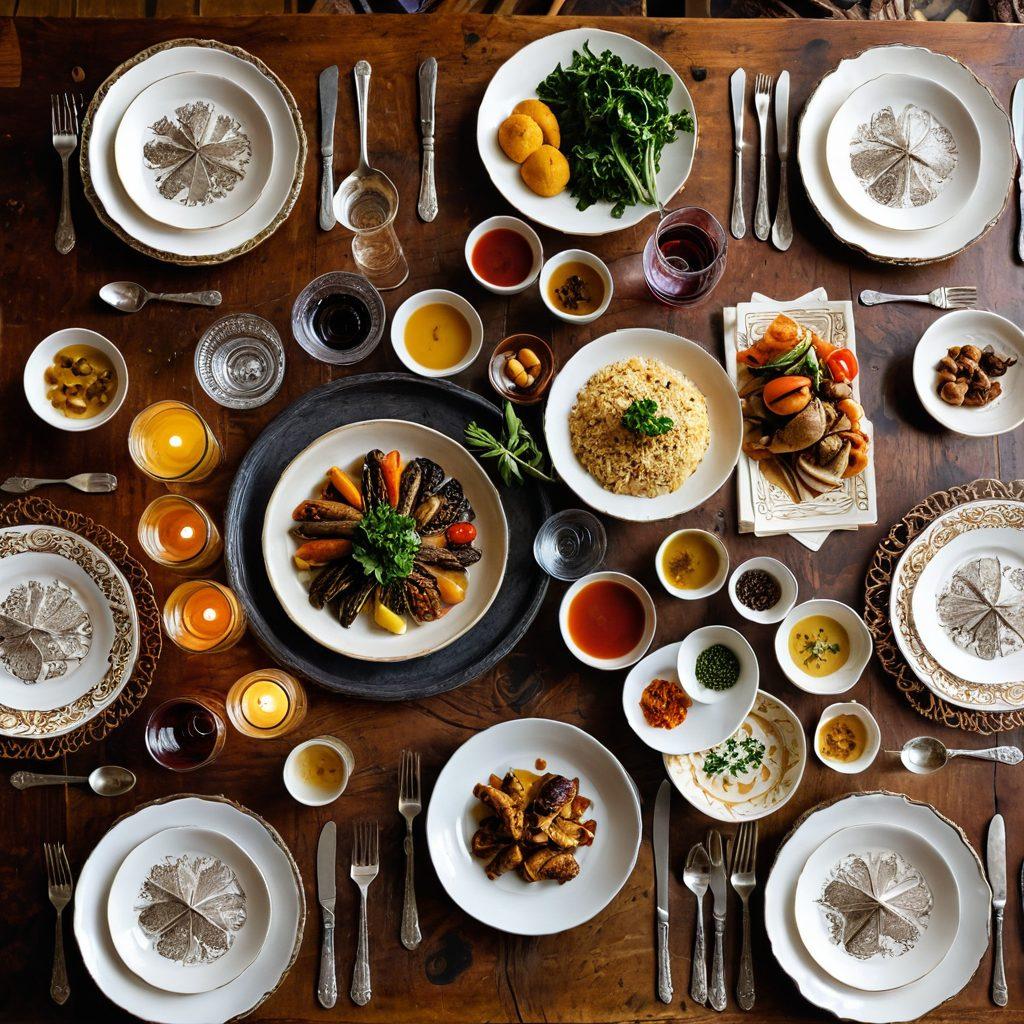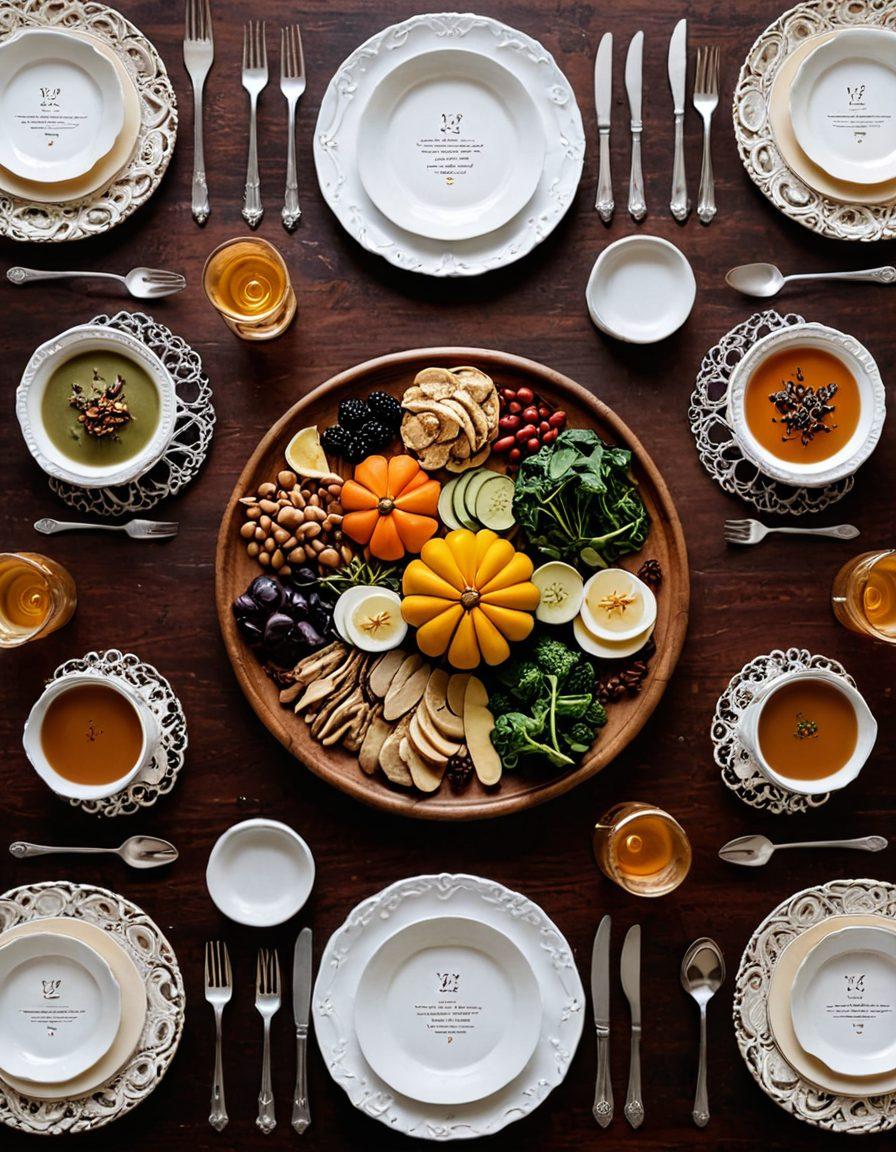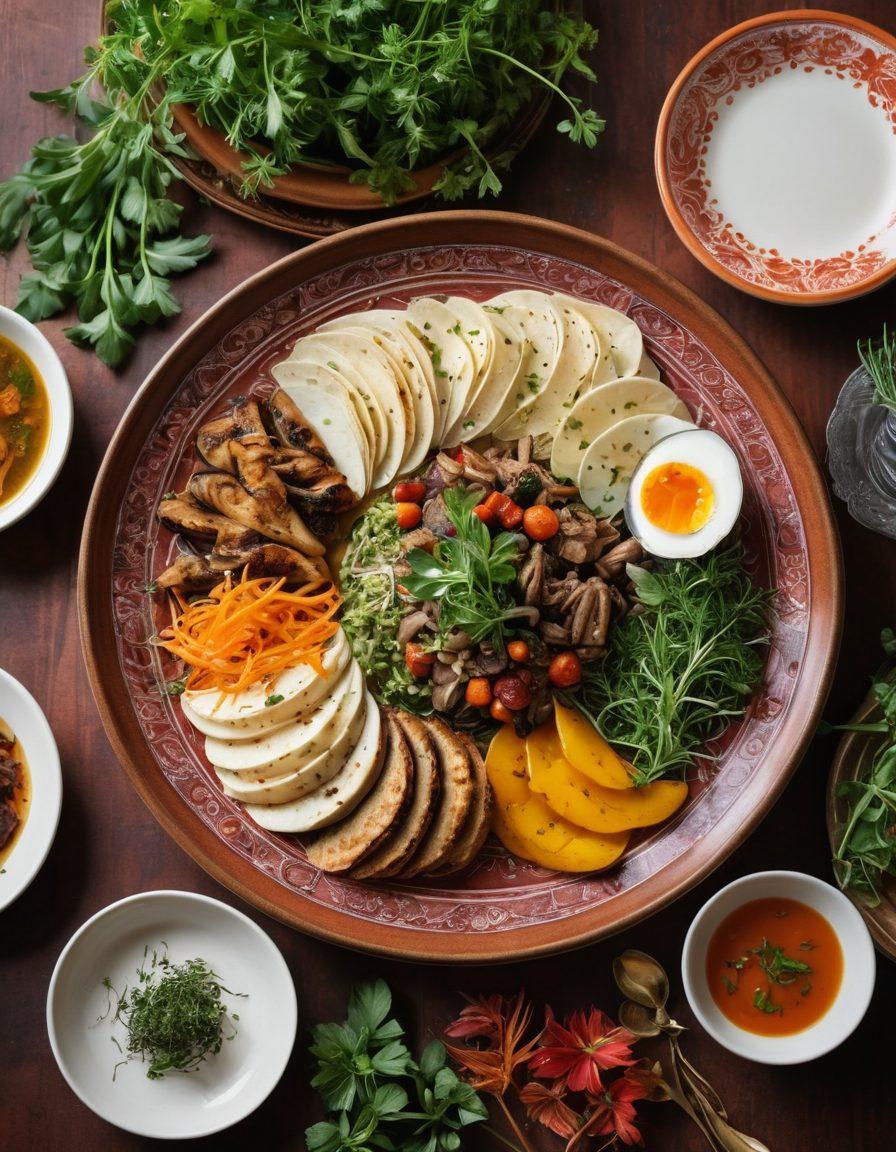Unearthing Culinary Traditions: A Delicious Journey Through Food Serving History
Imagine sitting around a table where the aroma of heritage and heart warms the air—this is the essence of exploring culinary traditions. Each dish served carries with it a tale from the past, an edible piece of history that connects us all. Food is not merely sustenance; it is a cultural narrative, an assertion of identity, and a vessel of connection to our ancestors. If you've ever wondered why grandma’s recipe for spiced apple pie feels like comfort wrapped in a crust, you're not alone. This culinary blog delves into how these deep-rooted customs shape our plates today, allowing us to savor the stories that have traveled through generations.
Food serving history isn't just a timeline of meals and feasts; it's a colorful map charting the influence of various cultures on what we eat. For example, did you know that the spicy eatables of the Southeast Asian kitchens have made their way into mainstream cooking methods worldwide? It's fascinating how cooking history dictates our palate preferences. From the elaborate banquet tables of royalty to the rustic gatherings of community kitchens, our gastronomic history is littered with flavors that tell tales of trade, migration, and innovation. Have you ever considered what your favorite dish might say about your family's journey?
As we investigate food heritage, it's essential to appreciate traditional cooking methods and how they've evolved—or perhaps, become endangered—in our fast-paced world. Many ethnic cuisines have delicately woven seasonal ingredients into their recipe history, ensuring that what we eat reflects the land and its bounty. A dish isn't just a recipe; it embodies the essence of locale and culture. Next time you enjoy a hearty pasta, think of the hands that crafted that dish over hundreds of years, adapting and shifting ingredients as Italy battled through changing seasons. Is there a better way to connect with history than to savor it?
Cultural food stories have a unique power—they whisper the social context, political struggles, and triumphant innovations behind each bite. It's like holding a passport in your hand, one that allows you to travel through the stories of Kitchen Heritage around the globe. When we embrace the overlap of different gastronomic practices, we engage more than just our taste buds; we nourish our minds with knowledge and appreciation for diversity. So, what stories do the spices in your cabinet tell? Are they solely for flavor, or do they represent a blend of cultures that dared to intertwine?
In our quest to dive deeper into these historical cooking techniques, let us also not forget our duty to honor those who have come before us. By learning these stories and incorporating them into our modern culinary practices, we enhance our food culture. Whether you're sprinkling a dash of nostalgia into your own kitchen or discovering new gourmet history, each meal prepares the canvas for more vibrant tales. Food is far more than nutrition; it's an art form, an expression of humanity, living history. So as you approach your next meal, consider how the traditions of yesterday shape those of today and relish every bite as a tribute to the past.
From Past to Present: A Deep Dive into Food Serving History
Imagine sitting down at a table, surrounded by loved ones, sharing a meal that carries with it generations of heritage and tradition. The aroma of spices fills the air, igniting our senses to not just what we are eating, but the rich tapestry of stories woven into each recipe. In this culinary blog, we embark on a delightful adventure, diving deep into the kitchen heritage that shapes our food culture today. By examining food serving history, we can uncover how historical cooking techniques and traditional cooking methods have preserved cultural food stories, tethering us to our ancestors.
The journey through food serving history is like peeling back layers of an onion, revealing different eras and influences that resonate in our kitchens today. From the feasts of ancient civilizations to the intimate family meals of modern day, every plate tells a story. Have you ever pondered how your favorite comfort food is a delightful amalgamation of past gastronomic history? It's fascinating to consider how ethnic cuisine from around the world has evolved into what we understand as gourmet history. The mingling of spices and cooking techniques invites us to savor the rich flavors of history on our plates.
As we peer into the past, let's reflect on one of the most significant transformations in food serving history: the transition from communal feasting to personalized dining. Remember the last time you gathered around a large table, sharing platters of food? That experience mirrors centuries of tradition where meals were a communal affair. The evolution of food culture reveals how our modern dining habits often prioritize individual experiences over togetherness. Yet, there's a growing trend of reviving communal dining, connecting us back to our roots. Isn't it heartwarming to think about the stories we can share over a large bowl of stews or salads?
In our cooking history blog, we often discuss recipe history, but what if we explored the stories behind the cooking methods themselves? Traditional cooking methods like roasting, steaming, or fermenting have not just transformed ingredients, but also the way we cultivate community and family bonds over meals. Each technique reflects the ingenuity and adaptability of our ancestors, often born out of necessity or influenced by geographic regions. Can you think about a dish in your family that showcases a particular cooking technique unique to your culture? Understanding these methods invites us to appreciate the artistry behind every bite.
Ultimately, our exploration of food serving history reminds us of the significance of culinary traditions in shaping our identities. Gastronomy is not just about sustenance; it's about honoring our shared heritage, celebrating diversity, and reconnecting with the past. So, the next time you savor a meal, take a moment to reflect—what stories does this dish carry? How does it connect you to your ancestry? The magic of food is that it transcends time, inviting us to savor the past, present, and future. Let's cherish this delicious journey and continue to uncover the wonders of our vast food heritage together.
Savoring Stories: The Intersection of Culinary Heritage and Gastronomy
Have you ever taken a bite of a dish and been transported back in time? Food has an extraordinary way of connecting us to our roots, telling stories of our ancestors and cultures long past. Savoring Stories: The Intersection of Culinary Heritage and Gastronomy invites us to explore the rich tapestry of our culinary blog, highlighting the deep-rooted narratives within food serving history. In a world fast-paced and ever-changing, pausing to appreciate our food heritage can be a delightful journey into the past.
Imagine walking into a home filled with the aroma of spices simmering in the pot, evoking memories of family gatherings and traditional cooking methods passed down through generations. As we savor these moments, we begin to understand that culinary traditions are not merely about flavor; they encapsulate cultural food stories that bridge gaps between communities and generations, invoking a sense of belonging. Have you ever wondered how the ingredients we use tell the story of a place’s history? From herbs cultivated in ancient gardens to the indigenous grains that feed many, every recipe is an emblem of a dynamic gastronomic history.
In exploring recipe history, we soon discover how cuisines evolve, adapting to social changes and migrations. Whether it's the blending of ethnic cuisine through the Silk Road or the creation of new dishes following migration, these transformations illustrate our desire to connect through food. Each dish we savor may carry a blend of flavors from cultures old and new, like a gourmet history on our plates! Can you recall a dish that is so rich in its background that every bite carries a tale of resilience, celebration, or nostalgia? These unique stories celebrate human experience and invite us to reignite our passion for historical cooking techniques.
Let’s not forget the invaluable role that kitchen heritage plays in our lives. It signifies more than simply the physical space where meals are prepared; it's a symbolic meeting place of our culinary traditions. As home cooks, chefs, and food enthusiasts, we have a responsibility to preserve and share these traditions. Have you thought about how your cooking reflects your heritage? Every time we stir a pot, bake a bread, or grill a feast, we aren't just creating meals; we are honoring and keeping alive the stories of our ancestors through the art of gastronomy.
As we navigate the delicious journey through food serving history, let's challenge ourselves to rediscover and embrace these culinary heritages. Start by documenting your own family recipes, perhaps creating a cooking history blog to share with the world, and inviting others to contribute their stories. By doing so, we weave a rich tapestry of food culture that pays homage to those who artfully brought flavors into our lives. After all, the next time you taste something remarkable, take a moment to ponder: what stories lie within each bite? Let us appreciate and engage with these delicious narratives of our world.


